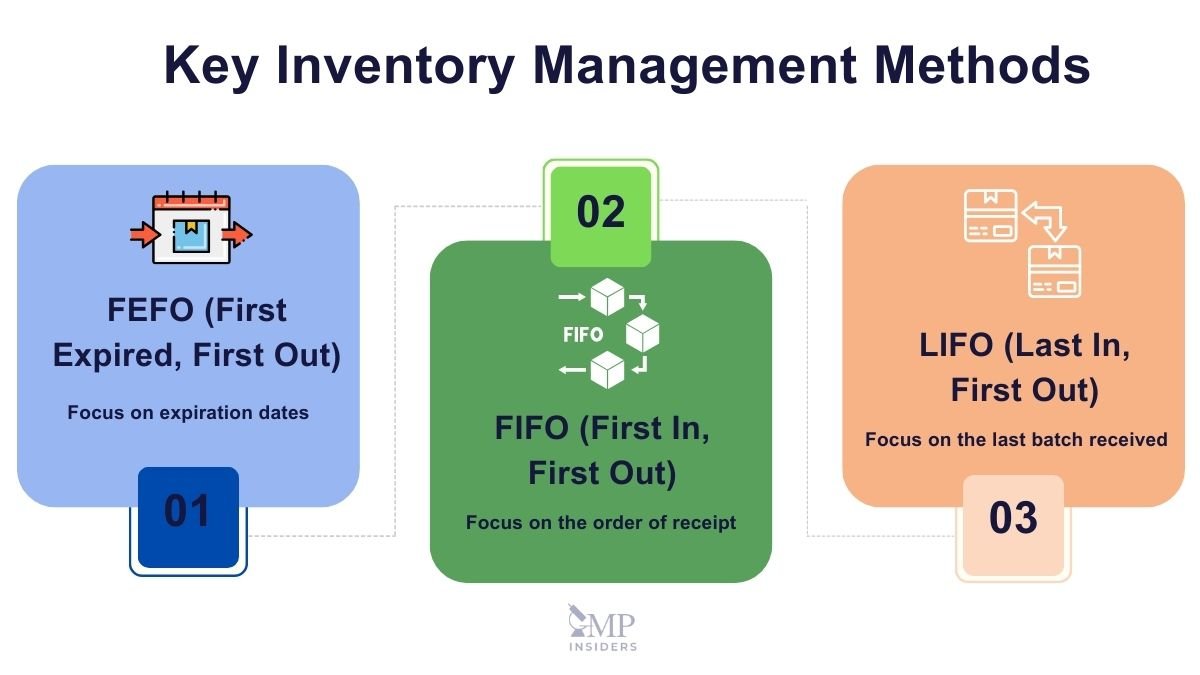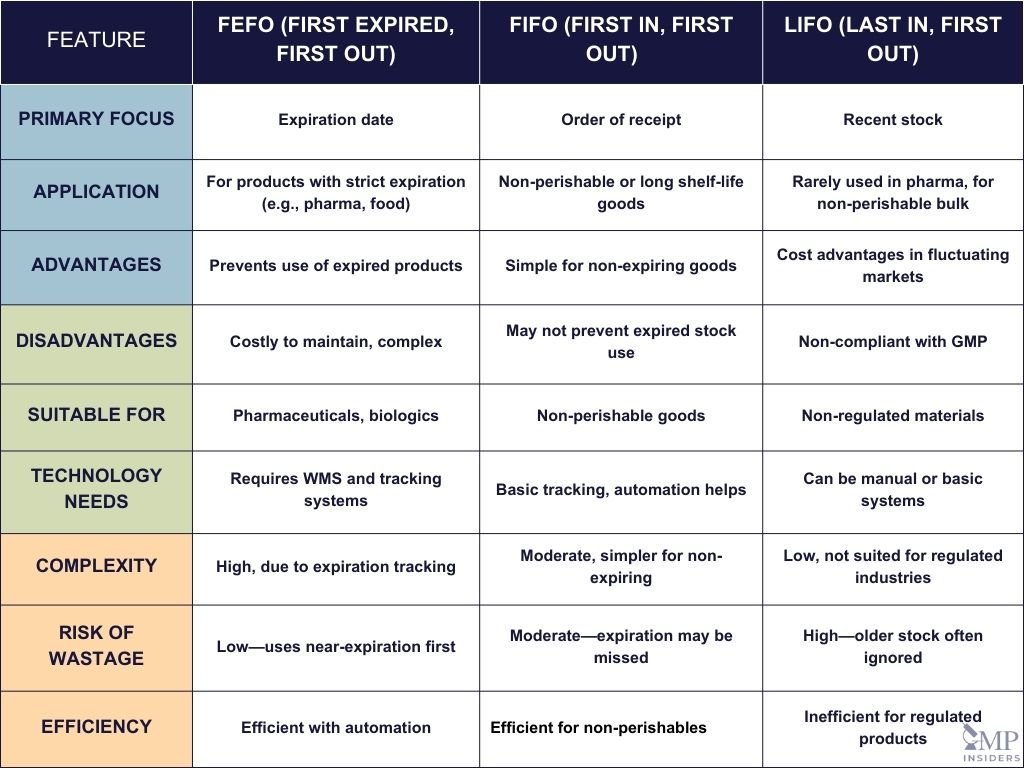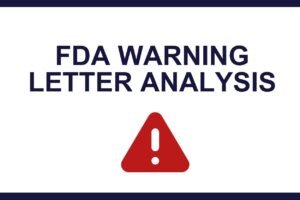One of the core components of inventory management in GMP/GDP-regulated warehouses is the stock rotation method, which ensures that products are used or shipped in the correct order, minimizing the risk of expired or outdated products entering the supply chain.
FEFO (First Expired, First Out), FIFO (First In, First Out), and LIFO (Last In, First Out) are the three primary methods used in different sectors of industry, each with its advantages, disadvantages, and suitable applications.
This article explores the differences between these methods, their benefits, and their appropriate applications in ensuring both compliance and efficiency within regulated environments.
RELATED: GDP In Pharma Industry
Importance of FEFO, FIFO, and LIFO in Compliance and Efficiency

Each inventory management method plays a distinct role in ensuring product quality, regulatory compliance, and operational efficiency. Poor inventory management can lead to the risk of distributing expired or compromised products, creating potential public health hazards and damaging the manufacturer’s reputation.
- Product Quality: Proper stock rotation helps ensure that products used in production or sold to customers are within their shelf life and retain the required level of potency, stability, and safety.
- Regulatory Compliance: Mismanagement of stock rotation could lead to regulatory breaches, product recalls, fines, or suspension of production activities.
- Operational Efficiency: Using the correct stock rotation method helps reduce waste, avoid overstocking, and minimize storage costs. This also contributes to lean manufacturing practices, reducing downtime and improving warehouse productivity.
FEFO (First Expired, First Out)
FEFO is the stock rotation system that ensures products with the earliest expiration dates are used or dispatched first. Unlike FIFO, which is based on the order in which products are received, FEFO prioritizes expiration dates to prevent the distribution or use of expired products.
This is particularly important for perishable goods like pharmaceuticals, food, and cosmetics, which have defined stability limits.
Advantages
- Regulatory Compliance: FEFO ensures adherence to stringent GMP/GDP regulations that mandate the use of products before they expire, thus preventing the risk of distributing expired products.
- Patient Safety: FEFO plays a critical role in maintaining product quality throughout the supply chain, ensuring that consumers receive safe, effective products with sufficient remaining shelf life.
- Minimization of Waste: By ensuring products closest to their expiration date are used first, FEFO reduces the risk of product obsolescence and wastage.
Disadvantages
- Increased Complexity: Implementing FEFO in a warehouse requires advanced tracking systems to monitor expiration dates accurately, making it more complex than simpler methods like FIFO.
- Higher Costs: The need for specialized Warehouse Management Systems (WMS) and inventory management software to monitor product expiration dates adds to the cost of implementation.
- Labor-Intensive Without Automation: In large warehouses, manual application of FEFO can be error-prone, time-consuming, and labor-intensive without proper automation.
Suitability
FEFO is crucial for the pharmaceutical industry, particularly for products with strict expiration dates, such as:
- Pharmaceutical products: Including prescription drugs, vaccines, and biologics.
- Medical devices with limited shelf lives.
- Biopharmaceuticals and biotechnological products, which may have specific storage and stability requirements.
FIFO (First In, First Out)
FIFO dictates that the first products to enter the warehouse are the first to be used or dispatched. This method is suitable for products that do not have strict expiration dates but where freshness is still desired.
Advantages
- Simplicity: FIFO is easy to understand and implement, especially in warehouses where products do not have expiration dates or have long shelf lives.
- Prevents Stock Accumulation: By using older stock first, FIFO helps avoid overstocking and ensures that inventory levels are kept manageable.
- Freshness of Stock: Even for non-perishable goods, FIFO helps to keep stock circulating regularly, reducing the risk of outdated products remaining unused for extended periods.
Disadvantages
- Inadequate for Expiration-Controlled Products: Since FIFO is based solely on the order of receipt, it may not ensure the proper usage of items nearing expiration, leading to potential waste.
- Limited Application in Pharma: While suitable for non-expiring items, FIFO is rarely used for finished pharmaceuticals due to regulatory requirements emphasizing expiration dates.
Suitability
- Non-perishable goods: Items such as packaging materials, labeling materials, or long shelf-life APIs, where expiration is not a significant concern.
LIFO (Last In, First Out)
LIFO prioritizes the most recently received products for use or dispatch. This method is seldom used in the pharmaceutical industry due to its inherent risks with product expiration and is generally reserved for industries where product freshness and expiration are not concerns.
Advantages
- Cost Savings in Certain Industries: LIFO can be beneficial in industries where price fluctuations occur, allowing for the use of recently priced items and possibly reducing tax burdens in some cases.
- Simple for High Turnover Goods: For non-perishable goods with high turnover, LIFO can help quickly move the most recent stock, which may have cost benefits in industries with fluctuating material costs.
Disadvantages
- Not Suitable for Pharmaceuticals: LIFO can lead to significant risks in pharmaceutical settings, as it may result in older products being left unused, leading to expiration and waste.
- Regulatory Non-compliance: LIFO is generally not compliant with GMP/GDP guidelines due to its inability to ensure proper control of product expiration.
Suitability
LIFO is not recommended for pharmaceutical or healthcare products. It may have limited use in industries dealing with non-perishable materials such as certain raw materials or packaging components.
Key Differences Between FEFO vs FIFO vs LIFO

FEFO (First Expired, First Out), FIFO (First In, First Out), and LIFO (Last In, First Out) are inventory management methods, each suited to different operational needs and regulatory environments.
- FEFO is the most compliant method for pharmaceuticals and other products with expiration dates. It ensures safety and minimizes wastage but requires advanced tracking systems to implement effectively.
- FIFO is a simpler method ideal for non-perishable goods or products with long shelf lives, but it may not always prevent the use of expired products.
LIFO is generally unsuitable for pharmaceutical or regulated industries due to its potential for leaving older stock unused, which could lead to compliance and quality issues.
Regulatory Requirements for Inventory Management
Inventory management in the pharmaceutical sector is regulated by a number of international standards and guidelines, which mandate how products should be stored, rotated, and managed. The most significant regulations include:
European Commission Guidelines on Good Distribution Practice (GDP) of Medicinal Products for Human Use — 2013/C 343/01
The European Commission’s GDP Guidelines are critical for ensuring the proper distribution of medicinal products. These guidelines set requirements for maintaining product integrity, safety, and efficacy across the supply chain, from the manufacturer to the end user (patients). The principles of FEFO are specifically mentioned in these guidelines to ensure safe and effective distribution of medicinal products.
Relevant Sections
Section 5.5 — Storage
Explanation: This section states that medicinal products should be distributed and handled according to the First Expired, First Out (FEFO) principle. This ensures that products with the earliest expiry date are used first, thus reducing the risk of expired or near-expiration products reaching patients.
Practical Application:
- Pharmaceutical companies and distributors must rotate stock based on the earliest expiration date.
- FEFO helps ensure the quality of medicinal products throughout their shelf life and prevents wastage of stock nearing expiration.
World Health Organization (WHO)
The WHO Technical Report Series — Annex 5: Good Distribution Practices (GDP) for Pharmaceutical Products provides global guidelines for the distribution of pharmaceutical products. The focus is on ensuring product quality, safety, and efficacy as they move through the supply chain.
Relevant Sections
Section 9.13 — Storage Areas
Explanation: This section requires that pharmaceutical companies follow the FEFO principle to ensure that products with the earliest expiry date are distributed first. The goal is to maintain product quality throughout the product’s lifecycle and reduce the risk of selling expired products.
Practical Application:
- The use of FEFO ensures that older stock is sold first, preventing the accumulation of products with shorter expiration dates.
- This system reduces waste and ensures that pharmaceutical products remain safe for patients.
European Medicines Agency (EMA) Guidelines on Good Manufacturing Practice (GMP)
While terms like FEFO (First Expired, First Out), FIFO (First In, First Out), and LIFO (Last In, First Out) are not explicitly mentioned in the EMA or EudraLex guidelines, the underlying principles of systematic stock management are well-represented. The focus on maintaining product quality and ensuring proper rotation is integral to regulatory compliance in the pharmaceutical industry.
EudraLex Volume 4 — Chapter 5: Production
Section 5.7 — Stock Rotation
Though not named directly, the concept of FEFO is embedded in this section, which emphasizes the importance of systematic stock rotation. Products should be handled to ensure that the earliest batch or those close to expiration are used or dispatched first. This approach reduces waste, ensures the efficacy of products, and maintains compliance with good manufacturing practices.
- Practical Application:
Stock rotation following the FEFO principle is critical in ensuring that products are distributed before their expiration. This minimizes the risk of inefficacy or waste. In cases where expiration is not a concern, such as with raw materials or excipients, FIFO is commonly employed, ensuring older stock is used first to maintain consistency.
United States Pharmacopeia (USP) and National Formulary (NF)
The USP-NF sets official standards for the quality, strength, purity, and identity of medicines in the United States. These standards align with FDA regulations and ensure the proper management of pharmaceutical stock.
Relevant Section
USP Chapter 1079 — Good Storage and Distribution Practices for Drug Products
Explanation: This chapter discusses the proper storage and distribution of drug products, highlighting that expired drugs should not be distributed, which implies the use of FEFO.
Practical Application
- Stock must be rotated so that drugs with shorter expiration dates are used before those with longer expiration dates.
- The use of FEFO ensures compliance with both USP standards and FDA regulations.
Choosing the Right Method for GMP/GDP Warehouses
When selecting the appropriate inventory management method in a GMP/GDP-regulated environment, several factors need to be considered:
- Product Type: Pharmaceuticals and products with expiration dates require FEFO to comply with regulatory mandates. For materials that are not subject to expiration concerns, FIFO may suffice.
- Regulatory Demands: Compliance with GMP/GDP regulations requires the use of FEFO for products with defined expiration dates to ensure patient safety and avoid regulatory penalties.
- Warehouse Capabilities: The size and complexity of the warehouse, the availability of automation, and the sophistication of tracking systems may influence the choice of method. Larger operations may need to invest in Warehouse Management Systems (WMS) capable of handling FEFO efficiently.
SEE ALSO: GxP Regulations in Pharma Industry
Technology and Automation in Stock Rotation
Given the complexity of pharmaceutical inventory management, automation and technology play a critical role in ensuring accurate stock rotation:
- Warehouse Management Systems (WMS): WMS software can be programmed to track expiration dates and automate the application of FEFO or FIFO across different product categories.
- Barcoding and RFID Tracking: By tagging products with barcodes or RFID tags, warehouses can streamline the tracking of batch numbers, expiration dates, and stock levels.
- Integrated Systems with ERP (Enterprise Resource Planning): Connecting WMS systems with ERP platforms allows for better forecasting, demand planning, and supply chain optimization, minimizing the risk of stockouts or overstocking.
FAQ: FEFO vs FIFO vs LIFO
How Can You Prevent Stockouts While Still Adhering to FEFO or FIFO?
Careful inventory planning, accurate demand forecasting, and regular audits of stock levels can help prevent stockouts, ensuring there is always sufficient stock on hand without compromising expiration-based rotation.
How Do Changes in Regulations Affect Design Reviews and Qualifications?
A well-organized warehouse layout ensures easy access to older stock or soon-to-expire items, facilitating efficient stock rotation and reducing the likelihood of compliance errors.
What Are the Challenges of Implementing FEFO in Global Supply Chains?
In global supply chains, variability in transportation time and storage conditions can complicate the execution of FEFO, requiring more advanced tracking and coordination systems.
Conclusion: How to Choose the Right Inventory Management System
To maintain regulatory compliance and operational efficiency, GMP/GDP-regulated warehouses must implement stock rotation methods that are appropriate for their products. FEFO is essential for pharmaceuticals, ensuring that expired products are never used or distributed. FIFO is suitable for non-perishable materials or items with long shelf lives, while LIFO has limited use in the pharmaceutical sector due to regulatory and quality risks.
By leveraging automation and technology, companies can enhance inventory management, reduce the risk of errors, and improve overall operational efficiency. Ultimately, following these best practices will help ensure that only safe, effective products reach patients while avoiding costly regulatory non-compliance.














